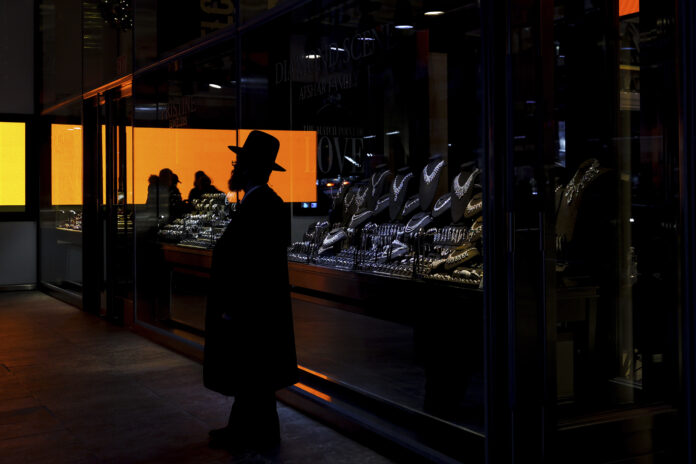
WASHINGTON (AP) — The Federal Reserve’s preferred inflation gauge eased further in December, and consumer spending fell — the latest evidence that the Fed’s series of interest rate hikes are slowing the economy.
Join our WhatsApp groupSubscribe to our Daily Roundup Email
Friday’s report from the Commerce Department showed that prices rose 5% last month from a year earlier, down from the 5.5% year-over-year increase in November. It was the third straight drop.
Consumer spending fell 0.2% from November to December and was revised lower to show a drop of 0.1% from October to November. Last year’s holiday sales were sluggish for many retailers, and the overall spending figures for the final two months of 2022 were the weakest in two years.
The Fed has been steadily driving up borrowing rates across the economy, seeking to slow spending, growth and the surging prices that have bedeviled the nation for nearly two years. Last year, the Fed raised its benchmark rate seven times, and next week it’s set to do so again.
The central bank’s key rate, which affects many consumer and business loans, is now in a range of 4.25% to 4.5%, up from near zero last March. Though inflation has been decelerating, most economists say they think the Fed’s harsh medicine will tip the economy into a recession sometime this year.
The Fed is in an increasingly delicate position. Chair Jerome Powell has emphasized that the central bank plans to keep boosting its key rate and to keep it elevated, potentially until the end of the year. Yet that policy may become untenable if a sharp recession takes hold.
Friday’s data may heighten concerns that the economy’s primary driver, the American consumer’s willingness to keep spending freely, is starting to crack under the weight of higher prices and interest rates.
On Thursday, the government reported that the economy grew at a healthy clip in the final three months of last year but with much of the expansion driven by one-time factors: Companies restocked their depleted inventories as supply chain snarls unraveled, and the nation’s trade deficit shrank.
By contrast, consumer spending in the October-December quarter as a whole weakened from the previous quarter, and business investment dropped off sharply. Overall, the economy expanded at a 2.9% annual rate in the October-December quarter, down slightly from a 3.2% pace in the previous quarter.
If consumers remain less willing to boost their spending, companies’ profit margins will shrink, and many may cut expenses. That trend could lead eventually to waves of layoffs. Economists at Bank of America have forecast that the economy will grow slightly in the first three months of this year — but then shrink in the following three quarters.
More frugal consumers would threaten to send the economy into a recession. But they can also help reduce inflation. Companies can’t keep raising prices if Americans won’t pay the higher costs.
Last week, the Federal Reserve’s beige book, a gathering of anecdotal reports from businesses around the country, said: “Many retailers noted increased difficulty in passing through cost increases, suggesting greater price sensitivity on the part of consumers.”
A raft of big companies, mostly in the technology sector, have announced sweeping layoffs in recent months, fueling concerns that a recession might be nearing. But those job cuts haven’t yet been enough to raise the unemployment rate, which remains at a half-century low.
In fact, the number of people seeking unemployment benefits — a proxy for layoffs — declined last week to 186,000, a very low level historically. And Walmart, the nation’s largest employer, said it would raise its minimum wage, from $12 to $14 an hour, to help it keep and attract workers.

The problem is, say the rate of inflation decreased (I’ll ignore egg prices and focus on home rentals and car prices etc.) how does that make up for the already high prices when middle class salaries never rose with it? So the rate of inflation slowing down isn’t enough, we need “deflation”.
Oh and about min wage. You see an argument that we all missed but it was staring at us in the face, if you increase that to $15 an hour business owners will just raise prices and you have for yourself a self induced Inflation. The genuis plan of the democrats.